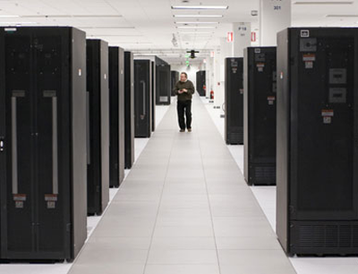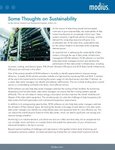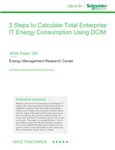IBM says 74 percent of energy consumed by its data centers in 2023 came from renewable sources, with 28 of its facilities running entirely on green electricity.
Big Blue’s latest ESG report shows that its overall energy use decreased 6.6 percent in 2023 compared to the previous year, with its global operations consuming 2.28 million MWh of energy.
IBM boosts energy efficiency of data centers
This was primarily driven by "an increased use of renewables in our offices in India and in two IBM Cloud data centers in the US,” the report said.
“Overall, 74 percent of the electricity consumed in our data centers came from renewable sources, including both contracted and grid-supplied compared to 66 percent in 2022.”
The company said it has been able to conserve more energy by making changes at its data centers. “More than 58 percent of energy conservation savings were due to upgrades in IT equipment at our data centers, most of which now incorporate hot/cold aisle containment,” the ESG report said.
“We also continued to execute projects aimed at enhancing the energy efficiency of both cooling and IT equipment, retrofitting lighting systems, and optimizing the operational efficiency in our data center facilities.”
For our other infrastructure buildings, IBM said additional savings were generated through strategic adjustments to lighting levels, temperature, and other building systems to “avoid unnecessary energy consumption.”
The company is also working towards increasing data center cooling efficiency by 20 percent by 2025, compared to a baseline it set in 2019.
“In 2023, our weighted average Power Usage Effectiveness (PUE) was 1.46, an improvement of 16.4 percent in cooling efficiency when compared to our baseline of 1.55 in 2019,” the ESG report said.
Big Blue's green ambitions
According to its website, IBM operates 60 data centers around the world, and said it has imposed new requirements on its colocation data centers to favor energy-efficient facilities. This strategy, the ESG report said, is “continuing to yield results” and helping it cut emissions.
IBM is aiming to become net zero by 2030, though it continues to work with companies in the oil and gas industry exploiting fossil fuels.
Last week it announced a new partnership with the Abu Dhabi National Oil Company that will see the companies “pilot blockchain-based transaction management for its commodities right from the oil wells through to its end customers.”
It is also working on projects that could help its customers reduce the carbon footprint of their data centers, and in February released research its Japanese division had carried out with NTT, which saw the companies develop an AI-powered solution that could help data center operators measure - and potentially cut - power consumption by monitoring the temperature of servers.
The project used an array of sensors to measure exhaust heat generated by equipment in one of NTT’s data centers in Japan. By feeding this information into an AI system, the companies say they observed a “strong correlation” between exhaust heat generated by servers and their power consumption, and as such the system can be used to calculate the energy used and the CO2 emissions for different parts of a data center.







